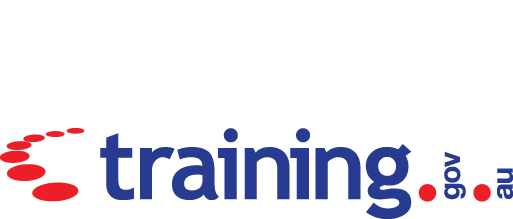Modification History
Not applicable.
Unit Descriptor
This unit covers the loading and unloading of cargo/goods in the resources and infrastructure industries. It includes preparing for loading activities, loading goods/cargo, securing goods/cargo, protecting goods/cargo, conducting housekeeping activities, and unloading goods/cargo. Licensing, legislative, regulatory and certification requirements that apply to this unit can vary between states, territories, and industry sectors. Relevant information must be sourced prior to application of the unit.
Application of the Unit
This unit is appropriate for those working in an operational role at worksites within:
- Civil construction
- Coal mining
- Drilling
- Extractive industries
- Metalliferous mining
Licensing/Regulatory Information
Refer to Unit Descriptor.
Pre-Requisites
Not applicable.
Employability Skills Information
This unit contains employability skills.
Elements and Performance Criteria Pre-Content
|
Elements describe the essential outcomes of a unit of competency. |
Performance criteria describe the performance needed to demonstrate achievement of the element. Where bold italicised text is used, further information is detailed in the required skills and knowledge section and the range statement. Assessment of performance is to be consistent with the evidence guide. |
Elements and Performance Criteria
|
ELEMENT |
PERFORMANCE CRITERIA |
|
1. Prepare for loading activities |
1.1. Access, interpret and apply compliance documentation relevant to the work activity 1.2. Receive, interpret and clarify shift changeover details 1.3. Communicate with other personnel 1.4. Select personal protective equipment appropriate for work activities 1.5. Select appropriate type of auxiliary equipment for work activities 1.6. Perform equipment pre -start checks to ensure equipment is ready for operation 1.7. Identify, address and report potential risks and hazards 1.8. Identify, address and report environmental issues 1.9. Adhere to emergency procedures to ensure safety of personnel and plant |
|
2. Load goods/cargo |
2.1. Identify load characteristics and use appropriate loading techniques to safely and efficiently move load 2.2. Identify hazardous and dangerous goods and adhere to relevant legislation and permit requirements 2.3. Assess and ensure that load characteristics and transport capacity meet approved parameters 2.4. Erect physical barricades and signage to prevent unauthorised entry to the area 2.5. Load goods /cargo in accordance with relevant mass and loading regulations and site procedures |
|
3. Secure goods/cargo |
3.1. Check the distribution of the load to ensure it is even, legal and within safe working capacity 3.2. Secure load at approved anchorage points 3.3. Adjust load restraint devices to ensure load is secure during transport 3.4. Protect load from weather conditions using approved coverage devices |
|
4. Protect goods/cargo |
4.1. Inspect the load for security to travel 4.2. Complete all required documentation |
|
5. Conduct housekeeping activities |
5.1. Clean equipment to maintain condition of equipment and ensure safe and efficient operations 5.2. Clean and store auxiliary service equipment 5.3. Control and report hazards to maintain a safe working environment |
|
6. Unload goods/cargo |
6.1. Assess location, stowage and remaining load before commencement 6.2. Unload in a safe and effective way making use of lifting aids and applications if required 6.3. Identify any goods requiring special handling 6.4. Relocate material in a manner that considers the heights, weight loading, size and crushability of the goods/cargo |
Required Skills and Knowledge
|
This section describes the skills and knowledge required for this unit. |
|
Required skills |
|
Specific skills are required to achieve the Performance Criteria of this unit, particularly for its application in the various circumstances in which this unit may be used. This includes the ability to carry out the following as required to load and unload goods/cargo:
|
|
Required knowledge |
|
Specific knowledge is required to achieve the Performance Criteria of this unit, particularly for its application in the various circumstances in which this unit may be used. This includes knowledge of the following as required to load and unload cargo/goods:
|
Evidence Guide
|
The evidence guide provides advice on assessment and must be read in conjunction with the performance criteria, required skills and knowledge, range statement and the Assessment Guidelines for the Training Package. |
|
|
Overview of assessment |
|
|
Critical aspects for assessment and evidence required to demonstrate competency in this unit |
The evidence required to demonstrate competency in this unit must be relevant to worksite operations and satisfy all of the requirements of the performance criteria, required skills and knowledge and the range statement of this unit and include evidence of the following:
|
|
Context of and specific resources for assessment |
|
|
Method of assessment |
This unit may be assessed in a holistic way with other units of competency. The assessment strategy for this unit must verify required knowledge and skill and practical application using more than one of the following assessment methods:
|
|
Guidance information for assessment |
Consult the SkillsDMC User Guide for further information on assessment including access and equity issues. |
Range Statement
|
The range statement relates to the unit of competency as a whole. It allows for different work environments and situations that may affect performance. Bold italicised wording, if used in the performance criteria, is detailed below. Essential operating conditions that may be present with training and assessment (depending on the work situation, needs of the candidate, accessibility of the item, and local industry and regional contexts) may also be included. |
|
|
Compliance documentation may include: |
|
|
Auxiliary equipment may be anything that is portable and mobile that is not part of the fixed infrastructure, and may include: |
|
|
Pre-start checks may include: |
|
|
Environmental issues may include: |
|
|
Goods /cargo may include: |
|
|
Transport may include: |
|
|
Clean may include methods such as: |
|
Unit Sector(s)
Load Handling
Competency field
Refer to Unit Sector(s).
Co-requisite units
Not applicable.


